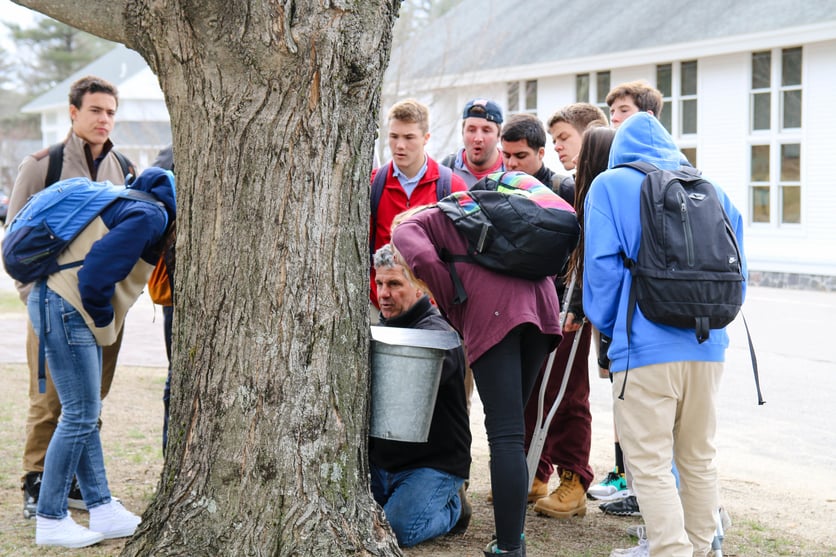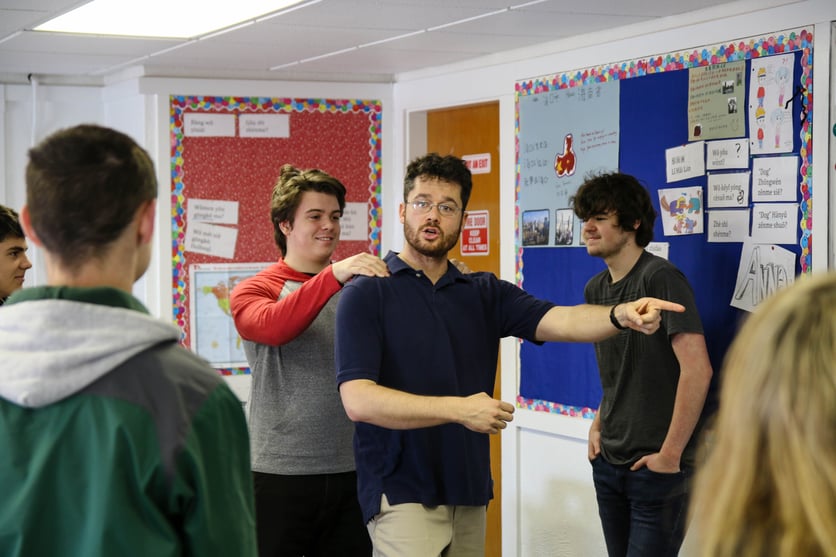This week’s March 30th editorial by Frank Bruni, College Admissions Shocker! is a humorous poke at the ridiculously competitive landscape of some of the top colleges in the country. The author of the editorial, and the best selling book Where You Go Is Not Who You’ll Be, takes on the foolishness of college admissions rate in a delightfully provocative way. And it has got me thinking on the eve of our own Revisit Day about our own school, our own process, and what the difference is between the landscapes of independent secondary schools and colleges.

With two children of college age, two different learners at different institutions, I have been able to contrast the experience of a college education with an independent school education. Both cost roughly the same (a lot), provide terrific facilities, and frequently boast about credentialed faculty and course offerings on and off campus. But, at least in the first two years of college, there’s a difference.

College students are locked into four courses a semester. New students often find themselves boxed out of classes they want to take, reducing the first year (or two) to sometimes pre-requisites or second-choice options, sometimes taught with less freedom to innovate. Add little access to the arts, fewer opportunities for afternoon activities or sports, less access to professors, academic advisors who can be distant, a landscape filled with boundless opportunities for unchecked distractions, and college begins to feel like a dubious proposition. Colleges can feel stuck in 1970’s teaching pedagogies disguised by super facilities supported by astronomical endowments. It’s odd.

Yes, the generalizations are unfair. But when one considers that good secondary schools provide the growing-up student with much more academic variety, more enlightened approaches to the how of learning, more access to the arts, more access to afternoon sports or activities, closer relationship with advisors, and a much richer learning environment overall, the value proposition tips to high schools. Sure, there are pre-requisites and requirements, but they take up less time in the overall academic schedule when a student can take six or seven classes. The opportunity for the inquisitive mindset to flourish is greater in high school. The opportunity to create the inquisitive mindset is also greater.

Often I hear students murmuring after returning from their first year at college. In high school, their teachers were better, the learning more dynamic, the advisors cared more, and why was that? How could that be? True, they don’t miss the structure, don’t miss the “fences” and relish their newfound freedom and independence, but they sure miss the connections and the realness of learning. They miss the pulse.

Many families are returning to Proctor for their second or third visit to campus. They are curious to know a little more about who we are, how we work, what kind of support we offer. We like that. We want them to know our school and community and all that is here. We think there’s a lot to set a student up for life-long self-awareness and success. So why the stampede for the colleges that have a name and a ridiculously low acceptance rate?
Why not a stampede for learning? For creating the best foundation of self?

Mike Henriques P'11, P'15
Proctor Academy Head of School








